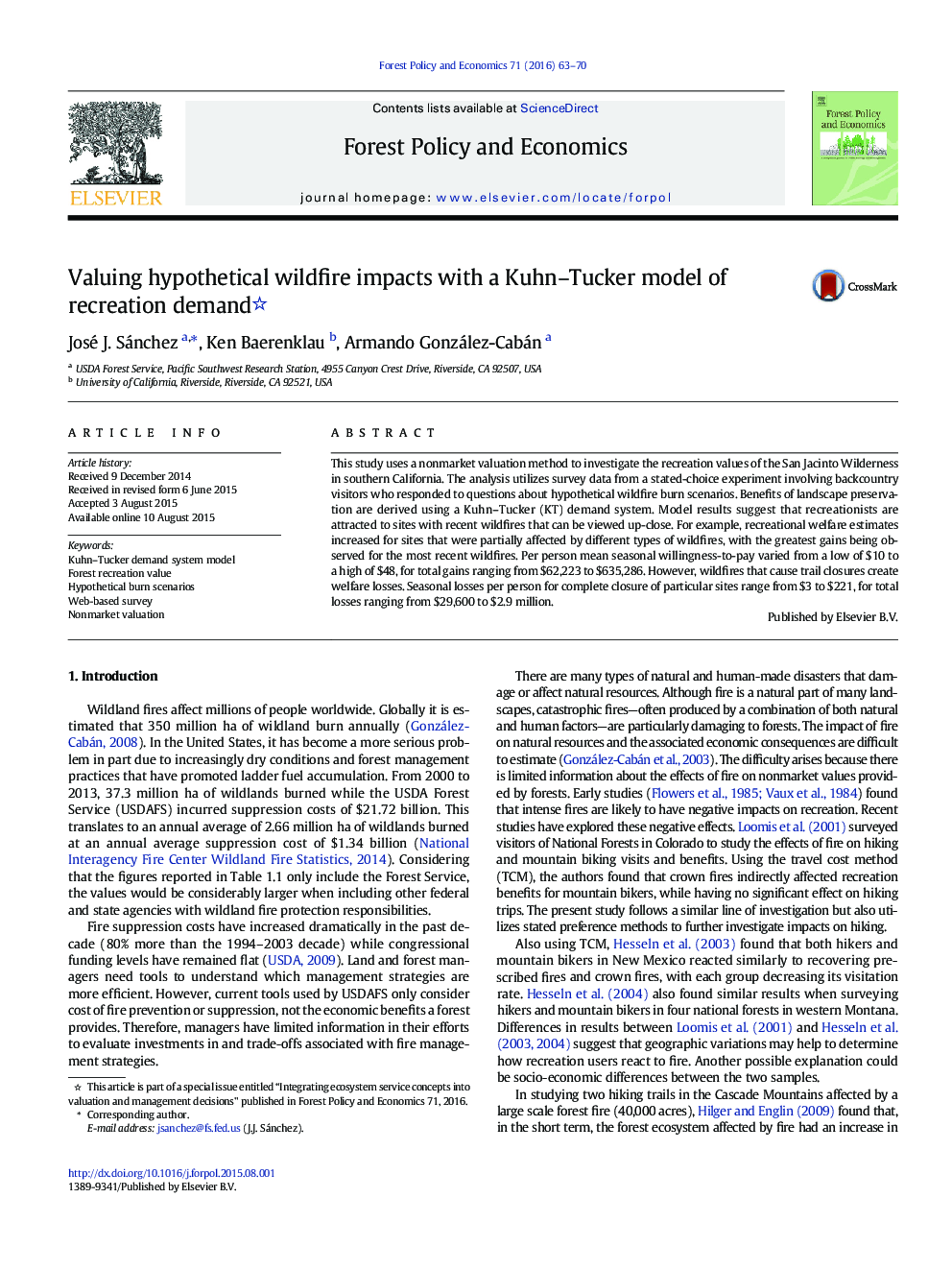| Article ID | Journal | Published Year | Pages | File Type |
|---|---|---|---|---|
| 6544854 | Forest Policy and Economics | 2016 | 8 Pages |
Abstract
This study uses a nonmarket valuation method to investigate the recreation values of the San Jacinto Wilderness in southern California. The analysis utilizes survey data from a stated-choice experiment involving backcountry visitors who responded to questions about hypothetical wildfire burn scenarios. Benefits of landscape preservation are derived using a Kuhn-Tucker (KT) demand system. Model results suggest that recreationists are attracted to sites with recent wildfires that can be viewed up-close. For example, recreational welfare estimates increased for sites that were partially affected by different types of wildfires, with the greatest gains being observed for the most recent wildfires. Per person mean seasonal willingness-to-pay varied from a low of $10 to a high of $48, for total gains ranging from $62,223 to $635,286. However, wildfires that cause trail closures create welfare losses. Seasonal losses per person for complete closure of particular sites range from $3 to $221, for total losses ranging from $29,600 to $2.9 million.
Keywords
Related Topics
Life Sciences
Agricultural and Biological Sciences
Forestry
Authors
José J. Sánchez, Ken Baerenklau, Armando González-Cabán,
